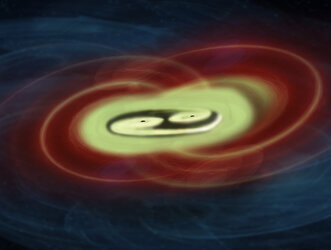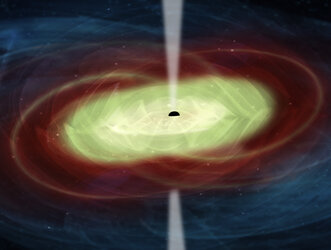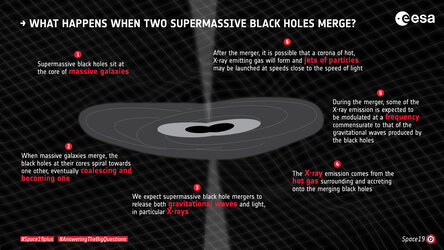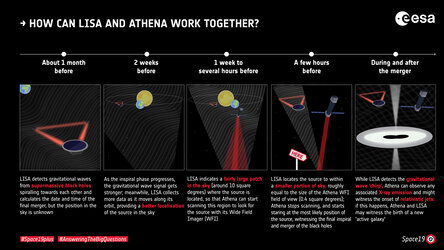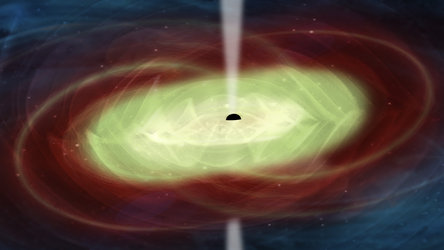
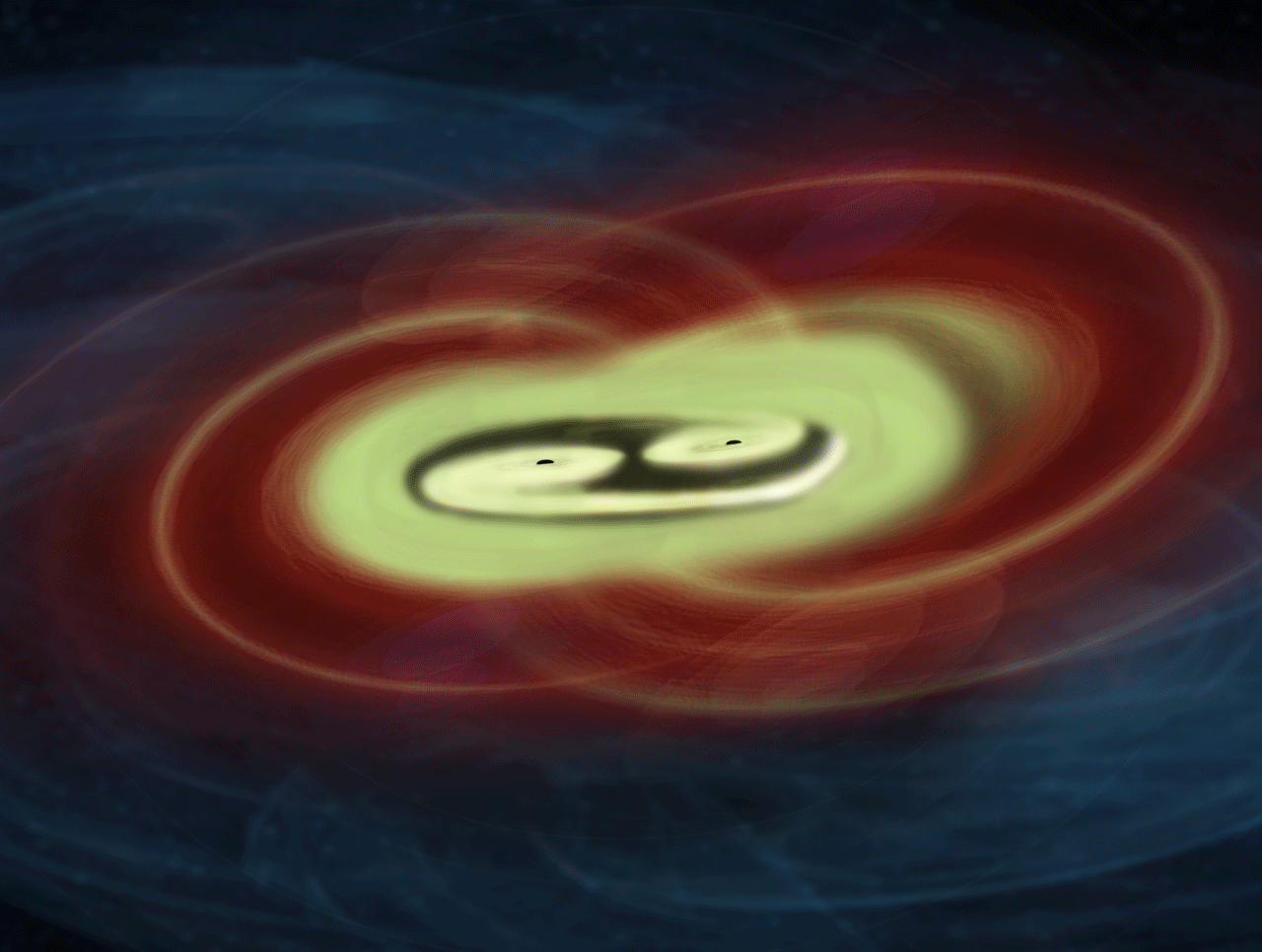
The merger of supermassive black holes
Artist's impression of the merger of two supermassive black holes during a galaxy collision.
Simulations predict that their mergers, unlike those of their stellar-mass counterparts, emit both gravitational waves and radiation – the latter originating in the hot, interstellar gas of the two colliding galaxies stirred by the black holes pair when they fall towards one another. As the two spiralling black holes modulate the motion of the surrounding gas, it is likely that the X-ray signature will have a frequency commensurate to that of the gravitational wave signal.
Combining the observing power of two future ESA missions, Athena and LISA, would allow us to study these cosmic clashes and their mysterious aftermath for the first time.
After the merger, we could see the emergence of a new X-ray source, and perhaps witness the birth of an active galactic nucleus, with jets of high-energy particles being launched at close to the speed of light above and beyond the newly formed black hole.
More information: A unique experiment to explore black holes
On Earth, we deal with gravity every day. We feel it, we fight it, and – more importantly – we investigate it. Space agencies such as ESA routinely launch spacecraft against our planet’s gravity, and sometimes these spacecraft borrow the gravity of Earth or other planets to reach interesting places in the Solar System. We study the gravity field of Earth from orbit, and fly experiments on parabolic flights, sounding rockets and the International Space Station to examine a variety of systems under different gravitational conditions. On the grandest scales, our space science missions explore how gravity affects planets, stars and galaxies across the cosmos and probe how matter behaves in the strong gravitational field created by some of the Universe’s most extreme objects like black holes. Join the conversation online this week following the hashtag #GravityRules

